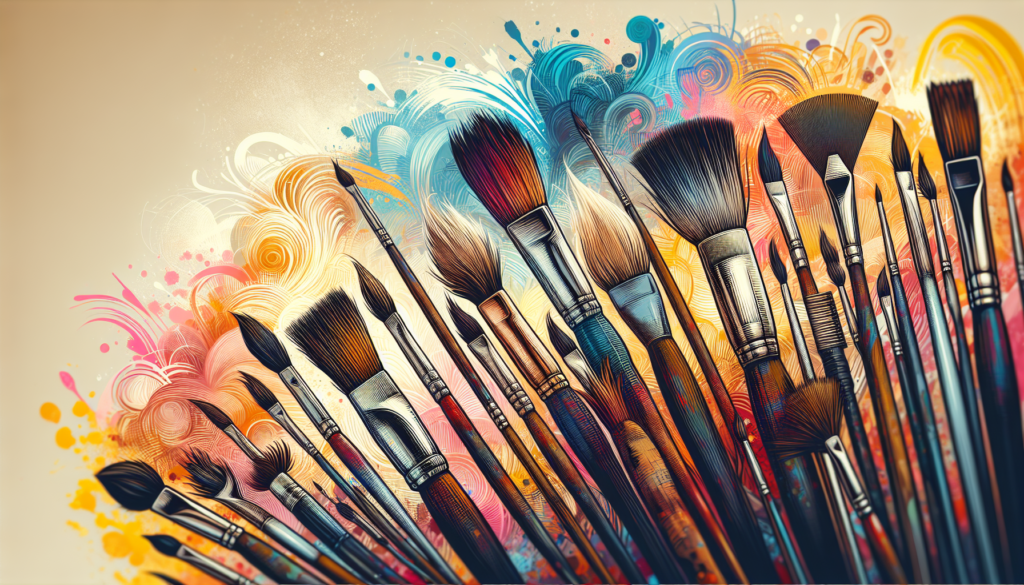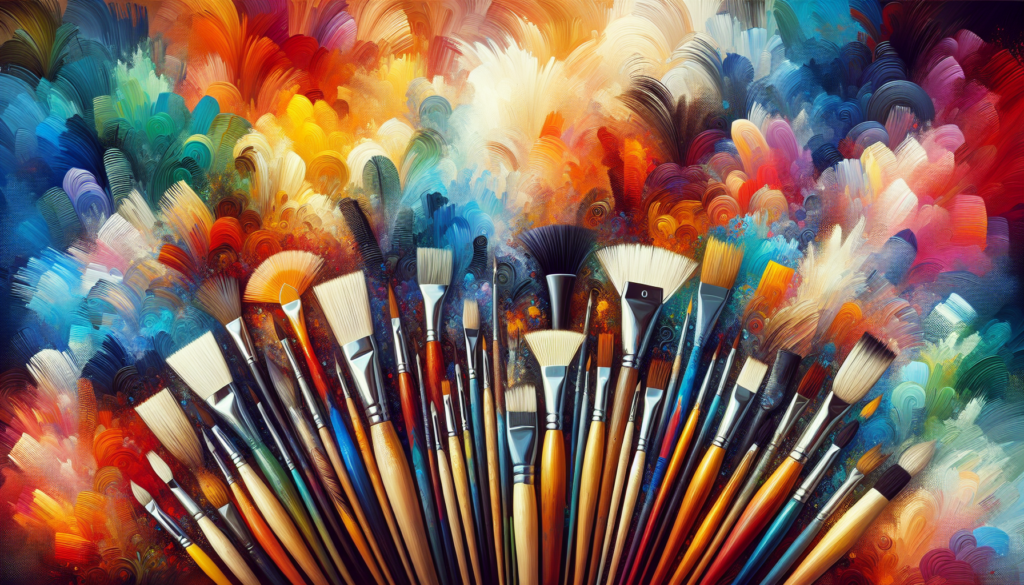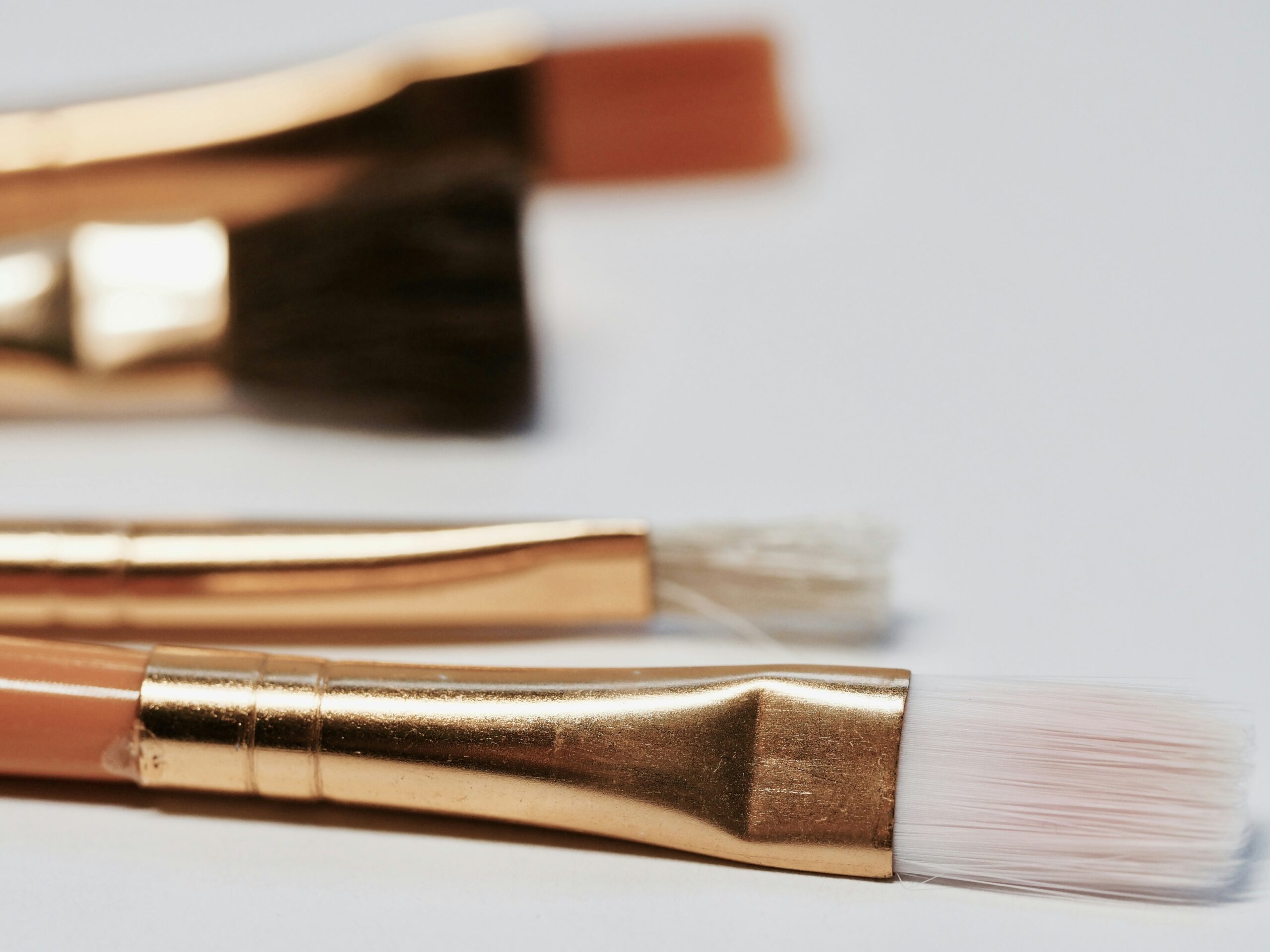Have you ever stood in an art supply store, overwhelmed by the vast array of paint brushes available, unsure of which one to choose for your painting project? As a beginner, navigating the world of paint brushes can be daunting. Yet, understanding the different types of paint brushes and their uses is essential to succeed in your artistic endeavors. This comprehensive guide aims to educate you about the various paint brushes you might need and how to use them effectively, enhancing your creative process.

Understanding the Basics: Anatomy of a Paint Brush
Before delving into the types of brushes, it’s crucial to understand the basic parts of a paintbrush. Knowing these components can help you make informed choices about the best brush for your painting needs.
Bristles
The bristles are the ‘business end’ of the paint brush. They come in various shapes and materials, each serving a specific purpose. Bristles can be natural, synthetic, or a mix. Natural bristles, often made from animal hair, hold paint well and provide a smoother application. Synthetic bristles, usually nylon or polyester, are durable and suitable for water-based paints.
Ferrule
This is the metal part that connects the bristles to the brush handle. A sturdy ferrule ensures that the bristles remain intact and do not shed. High-quality brushes often have a well-secured ferrule to prevent it from loosening over time.
Handle
Brush handles can be long or short, made from wood or plastic. The length of the handle affects your control and the style of painting. Shorter handles are often used for detailed work, while longer handles are suited for broader strokes.
Types of Brushes: A Closer Look
Understanding the different types of paint brushes is crucial when beginning your painting journey. Here, we discuss the most common types, their shapes, and their primary uses.
Round Brush
Round brushes have a pointed tip, which makes them versatile and suitable for creating fine lines and details, as well as broad strokes. They are ideal for sketching, outlining, and detailing.
Typical Uses:
- Thin to thick lines
- Detail work
- Filling small areas
Flat Brush
Flat brushes have long, rectangular bristles, perfect for making bold, sweeping strokes. They can carry a significant amount of paint and are used for bold strokes and filling wide spaces.
Typical Uses:
- Bold strokes
- Filling large areas
- Creating washes
Filbert Brush
filbert brushes have an oval shape that combines the characteristics of both a round and a flat brush. They are versatile and well-suited for blending and creating soft edges.
Typical Uses:
- Blending colors
- Creating soft, rounded strokes
- Floral and leaf designs
Detail Brush
Detail brushes are small round brushes with short, stiff bristles. They are designed for intricate work where precision is needed.
Typical Uses:
- Adding fine details
- Creating small line work
- Highlighting
Fan Brush
Fan brushes have bristles spread to resemble a fan. They are often used for creating textures like grass, leaves, or clouds.
Typical Uses:
- Creating textures
- Painting natural elements like grass or trees
- Blending colors
Angular Brush
Angular brushes, or angular flat brushes, have a slanted tip. They provide the control of a flat brush but allow for precise stroke work.
Typical Uses:
- Delicate line work
- Varied brushstroke widths
- Creating curves and angles
Choosing the Right Brush for Your Project
Determining which brush to use can depend on several factors, including the type of paint you are using, your painting surface, and the effect you wish to achieve.
Matching Brushes to Paint Types
Different paint types can require different brushes for optimal application.
-
Acrylic Paint: Synthetic brushes work best due to the ability to maintain shape and handle the thick acrylic. Flat, round, and filbert brushes are commonly used.
-
Oil Paint: Natural bristle brushes tend to hold oil paint well. Filbert and flat brushes are popular choices for their ability to create smooth strokes.
-
Watercolor Paint: Soft bristle brushes that can hold large amounts of water and pigment are ideal. Round and mop brushes are widely used for their capacity to deliver broad washes and fine lines.
Surface Type Considerations
The texture of your painting surface can also influence brush choice:
-
Smooth Surfaces: Soft, synthetic brushes often provide a fine, even application.
-
Rougher Surfaces: Stiffer bristles, such as hog bristles, may be needed to work paint into textured surfaces.
Desired Effects and Techniques
The effects you want to achieve can dictate your choice of brush. For instance:
-
Smooth, even layers: Flat or filbert brushes are ideal.
-
Texture and patterns: Fan and angular brushes can add unique textures.
-
Intricate details: A detail or round brush can provide precision for fine details.
Maintaining Your Brushes
Proper maintenance is crucial for prolonging the life of your brushes. Clean brushes after each use, store them properly, and handle them with care to ensure lasting performance.
Cleaning Your Brushes
The method of cleaning depends on the type of paint used:
-
Water-based Paints: Wash with soap and water. Use lukewarm water to avoid damaging bristles.
-
Oil-based Paints: Use a solvent like turpentine to remove paint. Follow with a soap and water rinse to remove residue.
Steps to Clean Brushes:
- Rinse the bristles thoroughly to remove excess paint.
- Use a mild soap or brush cleaner.
- Gently work the soap into the bristles and rinse.
- Shape the bristles gently before drying.
Storage Tips
Store your brushes properly to maintain their shape:
- Avoid placing brushes bristle-down in a jar, as this can deform them.
- Use a brush holder or lay them flat with the bristles hanging over an edge to maintain shape.
Handling and Usage Tips
Handle your brushes with care by holding at the ferrule for better control. Avoid pressing too firmly as this can damage bristles over time.

Investing in Quality
While high-quality brushes may require a greater initial investment, they are often longer lasting and can greatly improve painting experience and outcomes.
Evaluating Quality
Signs of a high-quality brush include:
- Secure ferrule with no wobble
- Bristle tips aligned and natural
- No shedding during use
Cost vs. Durability
Quality brushes often have superior craftsmanship, resulting in improved longevity and performance, justifying their cost over time compared to frequent replacements of cheaper alternatives.
Experimentation and Personal Preference
Experimentation is key to finding which styles and techniques suit you best. Over time, this will lead you to develop personal preferences tailored to your artistic style and needs.
Discovering Your Style
Try working with:
- Different bristle types and shapes
- A variety of paint mediums
- Broad and narrow brushes to explore diverse stroke effects
Practice and Adaptation
As you gain confidence and experience, your ability to adapt and utilize various brushes will enhance, allowing you to manipulate them for unique results tailored to your artistic vision.

Conclusion
Navigating the world of paint brushes as a beginner doesn’t have to be overwhelming. By understanding the distinctions among brush types, materials, and when to use them, you will be well-equipped to begin your artistic journey. Whether you are striving for intricate details, exploring broad splashy strokes, or creating soft blends of color, the right brush is an invaluable tool in expressing your creativity. By investing in quality brushes, maintaining them with proper care, and experimenting with different techniques, you will develop both the skills and confidence necessary to fill your canvas with life and color. Remember, the journey to mastering any art form is personal and ongoing, so allow yourself the freedom to explore and express.



